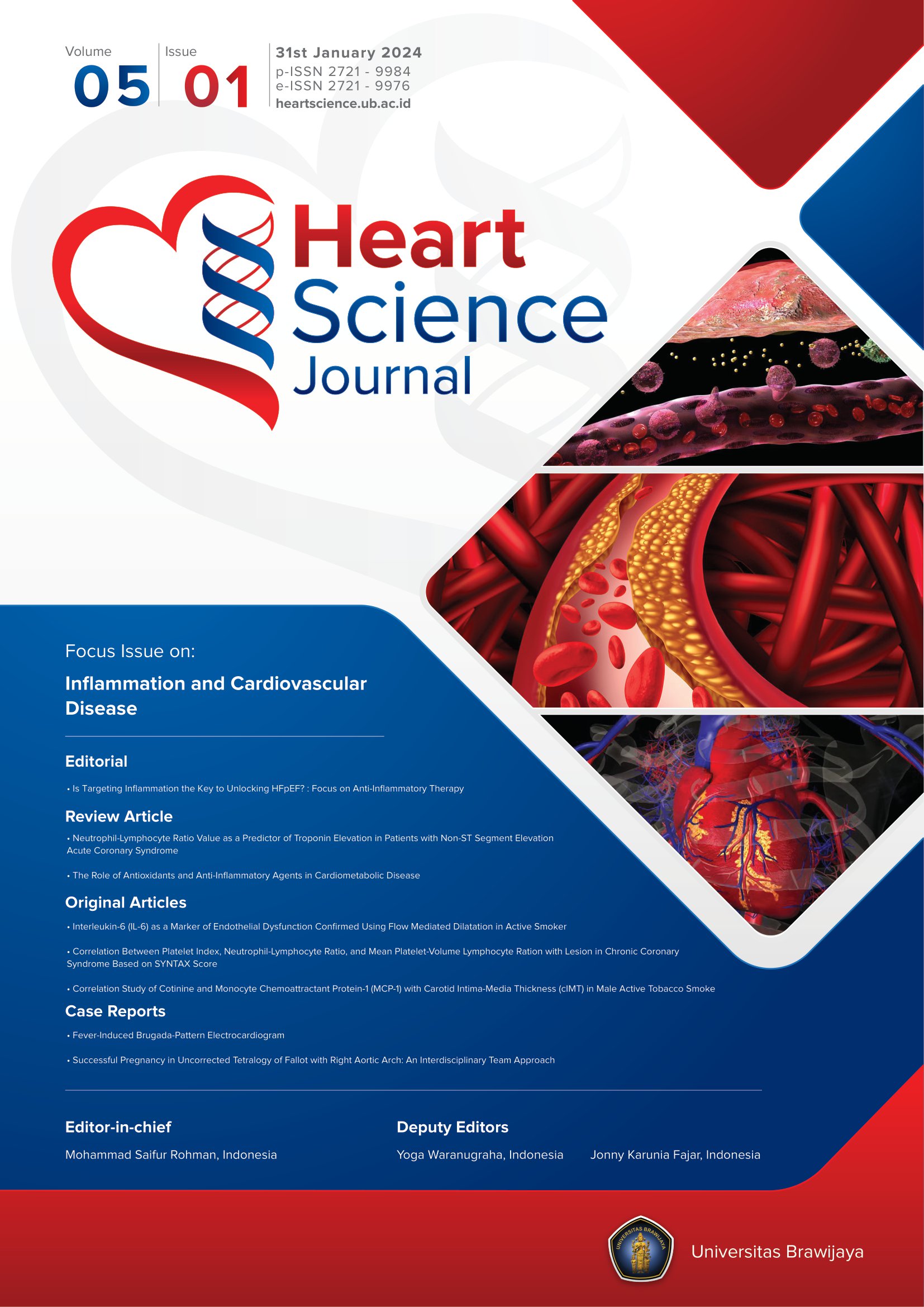The Nightmare in Defect Occlusion by Transcatheter: A Case Report
Abstract
Background :
ASD closure ASD closure with a transcatheter is the first choice in patients who meet the criteria for insertion. Closure using this method is relatively safe, and has low complications. Several factors must be considered so that this closure action can be optimal.
Case illustrations:
A 24-year-old woman with complaints of shortness of breath during strenuous activities since 3 years ago. Transthroracal echocardiography showed a gap in the IAS of 1.7-1.9 cm. The patient then underwent TEE and DXRL. The patient was planned for percutaneous ASD closure with zero fluoroscopy. The patient was punctured on the right femoral, and entered into the occluder memopart no 24 mm. Do a wriggle test, the occlude tool is installed properly. When the device was pulled out, the patient's blood pressure dropped to 75/52. On TEE examination, pericardial effusion was found and pericardiocentesis was performed, obtained 600 cc of fluid. The patient was then observed in the ICVCU, and there was no additional free fluid in the pericardial cavity.
Discussions:
ASD closure can be done through percutaneous and surgery. Closure via percutaneous is the main option. Complications and treatment period is shorter than surgery. Preparation and timing of appropriate action is closely related to clinical outcomes. Observation and knowledge of the risks of the procedure are very important to be able to detect complications and optimize clinical outcomes.
Keywords
Full Text:
PDFReferences
Asakai H, Weskamp S, Eastaugh L, d’Udekem Y, Pflaumer A. Atrioventricular block after ASD closure. Heart Asia. 2016;8(2):26-31. doi:10.1136/heartasia-2016-010745
Yang MC, Wu JR. Recent review of transcatheter closure of atrial septal defect. The Kaohsiung Journal of Medical Sciences. 2018;34(7):363-369. doi:10.1016/j.kjms.2018.05.001
Khajali Z, Firouzi A, Pouraliakbar H, Hosseini Z, Jorfi F. Case report of worsening of preexisting pericardial effusion after ASD device closure: is it calamitous? Egypt Heart J. 2021;73(1):50. doi:10.1186/s43044-021-00171-8
Kovacevic P, Srdanovic I, Ivanovic V, Rajic J, Petrovic N, Velicki L. Late complications of transcatheter atrial septal defect closure requiring urgent surgery. pwki. 2017;4:335-338. doi:10.5114/aic.2017.71617
Altunbas G. A unique late complication of transcatheter atrial septal defect closure. Anatol J Cardiol. Published online 2019. doi:10.14744/AnatolJCardiol.2019.30388
Faccini A, Butera G. Atrial septal defect (ASD) device trans-catheter closure: limitations. J Thorac Dis. 2018;10(S24):S2923-S2930. doi:10.21037/jtd.2018.07.128
Tanghöj G, Odermarsky M, Naumburg E, Liuba P. Early Complications After Percutaneous Closure of Atrial Septal Defect in Infants with Procedural Weight Less than 15 kg. Pediatr Cardiol. 2017;38(2):255-263. doi:10.1007/s00246-016-1507-3
Roy D, Sharma R, Bunce N, Ward D, Brecker S. Selecting the optimal closure device in patients with atrial septal defects and patent foramen ovale. Interventional Cardiology. 2012;4(1):85-100. doi:10.2217/ica.11.90
Jalal Z, Hascoet S, Baruteau AE, et al. Long-term Complications After Transcatheter Atrial Septal Defect Closure: A Review of the Medical Literature. Canadian Journal of Cardiology. 2016;32(11):1315.e11-1315.e18. doi:10.1016/j.cjca.2016.02.068
Jung SY, Choi JY. Transcatheter closure of atrial septal defect: principles and available devices. J Thorac Dis. 2018;10(S24):S2909-S2922. doi:10.21037/jtd.2018.02.19
DOI: https://doi.org/10.21776/ub.hsj.2022.003.03.7
Refbacks
- There are currently no refbacks.
Copyright (c) 2022 Iskandar Iskandar, Seprian Widasmara, Ratna Pancasari, Heny Martini

This work is licensed under a Creative Commons Attribution 4.0 International License.









